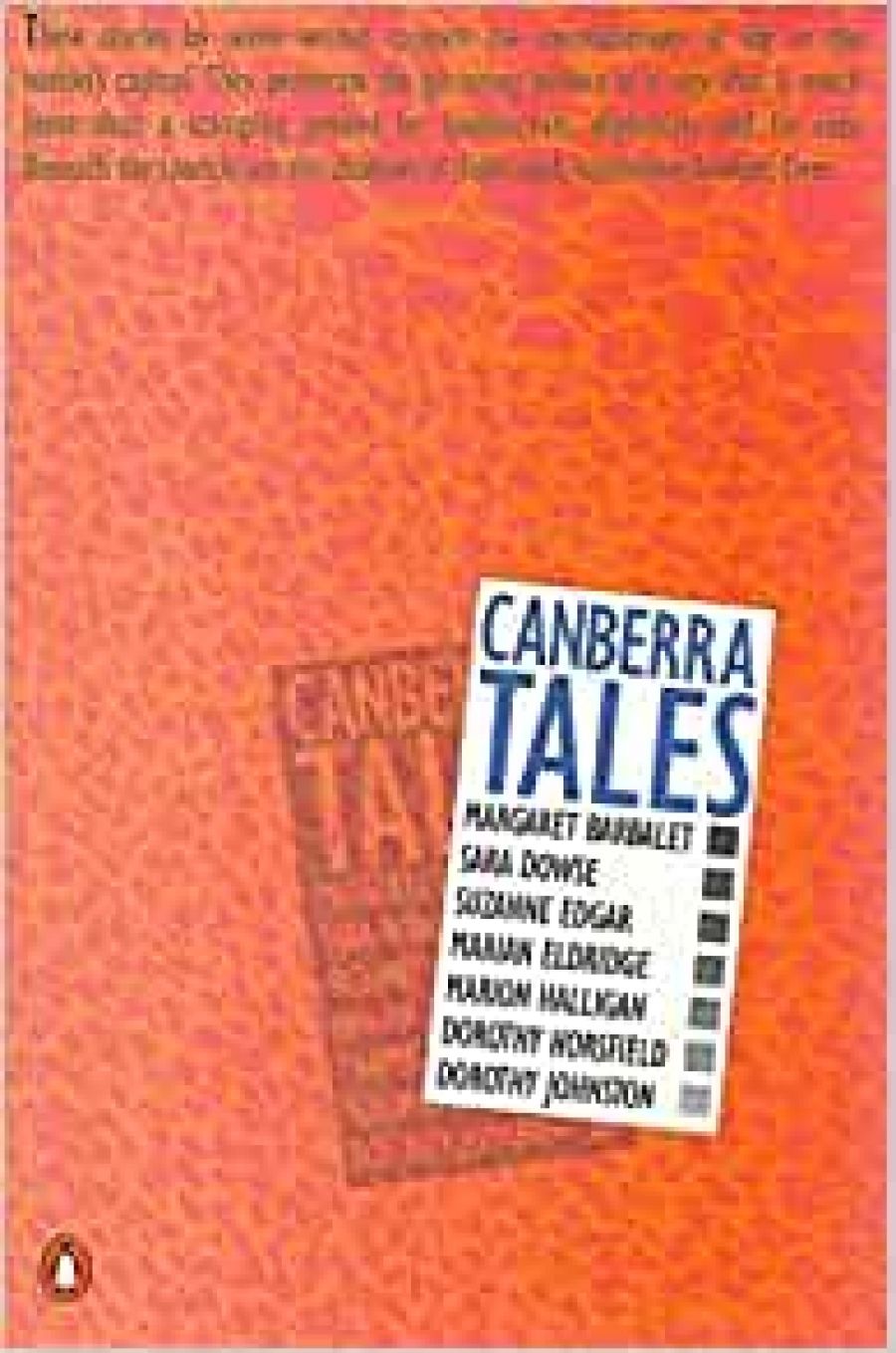
- Free Article: No
- Contents Category: Fiction
- Review Article: Yes
- Custom Highlight Text:
Short stories are often disappointing, and this collection is no exception. What a pity that so much strength and force has been put into a book that lacks a plan and presents too many inconclusive pieces.
- Book 1 Title: Canberra Tales
- Book 1 Biblio: Penguin, 262 pp, $12.99 pb , ISBN O 14 0111 68 9
The best of the bunch is without any doubt Sara Dowse’s ‘My Cousin Paolo’. The tale opens gently and makes for immediate interest in the setting: suburban stratification is shown in Sydney and Canberra through the eyes of the migrant schoolgirl Lisa. Aunt Simonetta seems very glamorous in her affluence and cousin Paolo much admired as visit follows visit until mystery takes over and the dramatic climax shocks. In fact, it is almost a novella – that form recently revived and rather more appropriate than so-called short stories that have little to say.
These women all try to point out that although (Canberra) people are different their lives are much the same. They are trapped, wrecked, removed from support, bored, and relieved only by the violence of death or divorce. Very few characters are happy or content and there is no reflection of the scenic beauty surrounding them.
It’s difficult to find any sparkle in these pages although a shopfront is provided for some excellent writers. The fact that they are exclusively women makes it a bit of a closed shop, and life in Canberra is not like that. The small photos and biographies preceding each contribution also do little to bring the reader closer to the writer. Nevertheless, on re-reading, a special sort of identification was found in several places – the awful attraction that keeps people at work in an environment they fear and about which they joke as play – the fatal attraction.
The stories for the most part are not pithy and are presented rather strangely with Barbalet and Dowse at the end and the others in strict alphabetical order. This reader chose to begin with Johnston and proceed to Edgar, Horsefield, Dowse, Barbalet, Halligan, and Eldridge.
It’s not really a terribly good idea to take them all at once; better to dip here and there and delight in touching pieces like ‘Scales’ (Barbalet) about the fellow who worked all his life, man and boy, in the same government department or Suzanne Edgar’s humorous babysitting episode ‘At Mrs. Pickering’s’.
The Afterword is a bit of a worry. It smacks of refuges, women’s centres, and insecurity. Why talk about why and where these good women wrote? Why not just get on with it separately or together, without all the leaning and agonising.
The real world is really quite welcoming and the group of seven writers would do well to front up to it fearlessly and individually. Each member can surely survive.


Comments powered by CComment